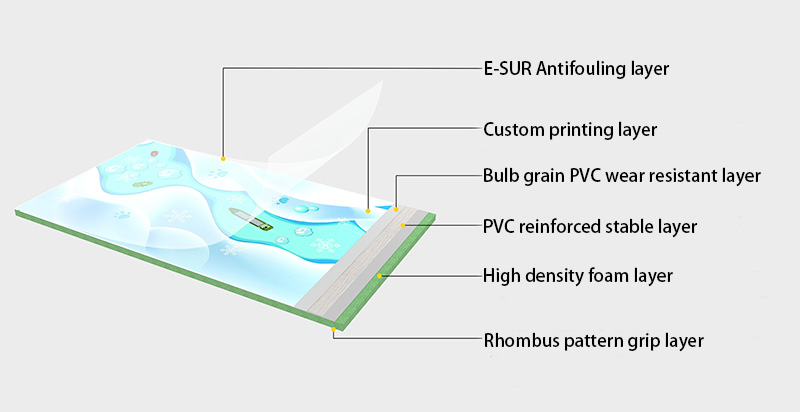Nov . 15, 2024 22:00 Back to list
running track surface
The Importance of Running Track Surfaces A Comprehensive Overview
When it comes to athletics, particularly track and field events, the surface on which athletes train and compete plays a critical role in performance, safety, and overall experience. The choice of running track surface can significantly affect athletes' speed, endurance, and risk of injury. Understanding the various materials and designs available helps both athletes and coaches make informed decisions when it comes to training facilities and competition venues.
Types of Running Track Surfaces
There are several types of surfaces used for running tracks, each with its advantages and disadvantages
. The most common materials include asphalt, concrete, and synthetic materials, such as polyurethane and rubber.1. Asphalt This is a cost-effective and durable option that is often found in outdoor tracks. Asphalt provides a relatively firm surface, which can lead to faster speeds but may also increase the risk of injury to athletes, especially if the surface becomes too hard or weathered. Maintenance is crucial; cracks and uneven sections can hinder performance and pose safety risks.
2. Concrete Like asphalt, concrete is durable and strong but is generally considered less favorable for running surfaces. Its firmness can lead to a higher risk of impact-related injuries, making it unsuitable for competitive track events. However, concrete is sometimes used in training facilities or recreational areas where cost is a major concern.
3. Synthetic Surfaces Over the past few decades, synthetic materials have become the gold standard for running tracks. Polyurethane and rubber tracks provide a perfect balance of cushioning and firmness, allowing for optimal performance while reducing the risk of injury. These surfaces are designed to absorb impact, which can help prevent joint stress and fatigue during intense training sessions or competitions. Additionally, synthetic tracks are available in various colors and styles, allowing for customization based on aesthetic preferences.
Factors Influencing Surface Selection
running track surface

When selecting a running track surface, several factors should be taken into account
- Athlete Needs Different events or training regimens may require specific types of surfaces. Sprinters, for instance, may prefer a harder surface that allows for greater speed, while middle-distance or long-distance runners might benefit from a more cushioned option.
- Climate The region's weather can influence the lifespan and maintenance of a track surface. For example, areas with severe winters may see wear and tear on asphalt or rubber surfaces, making more durable synthetic options preferable.
- Budget Synthetic tracks can be more expensive to install but often save money in the long run due to lower maintenance costs. Depending on the budget constraints of a school, university, or athletic facility, a well-planned investment in high-quality surfaces can yield significant benefits over time.
Maintaining Running Tracks
Regardless of the surface type, proper maintenance is essential for ensuring the safety and longevity of athletic tracks. Regular inspections, cleaning, and repairs can prevent small issues from evolving into serious problems. Specific maintenance practices can vary based on the type of surface. For instance, rubber tracks often require periodic resurfacing, while asphalt tracks may need sealing and crack filling.
Conclusion
The choice of running track surface is a foundational element of athletic training and performance, significantly impacting athletes' experiences and outcomes in competitions. By understanding the characteristics, advantages, and limitations of different surfaces, coaches and administrators can create safe, efficient, and inspiring environments for athletes to hone their skills. As the world of athletics continues to evolve, investing in high-quality track surfaces will play a pivotal role in nurturing talent and promoting excellence in the sport of running. Whether sprinting, hurdling, or long-distance running, the right track surface can make all the difference, leading athletes to achieve their personal bests and realize their full potential.
-
Sport Court Tiles with AI Innovation | Durable & Safe
NewsAug.01,2025
-
Vinyl Carpet Flooring | Durable & Waterproof Design
NewsJul.31,2025
-
Premium Basketball Board Stand with GPT-4-Turbo AI
NewsJul.31,2025
-
Premium Maple Flooring for Gyms & Homes | PVC & Vinyl Options
NewsJul.30,2025
-
Premium Outdoor Basketball Court Tiles for All Weather Use
NewsJul.30,2025
-
Durable Basketball Board Stand for Indoor & Outdoor Use
NewsJul.29,2025

